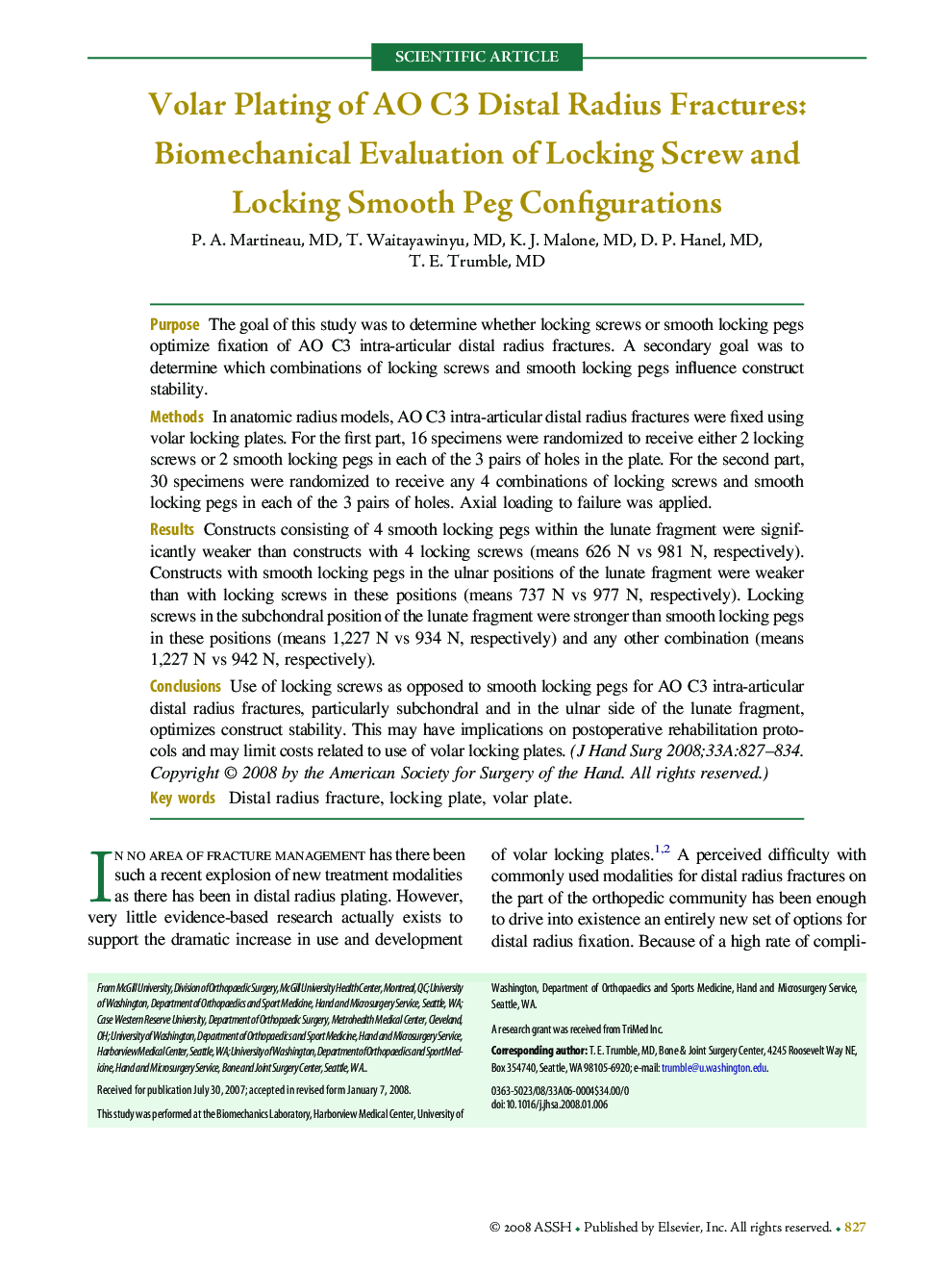| Article ID | Journal | Published Year | Pages | File Type |
|---|---|---|---|---|
| 4068447 | The Journal of Hand Surgery | 2008 | 8 Pages |
PurposeThe goal of this study was to determine whether locking screws or smooth locking pegs optimize fixation of AO C3 intra-articular distal radius fractures. A secondary goal was to determine which combinations of locking screws and smooth locking pegs influence construct stability.MethodsIn anatomic radius models, AO C3 intra-articular distal radius fractures were fixed using volar locking plates. For the first part, 16 specimens were randomized to receive either 2 locking screws or 2 smooth locking pegs in each of the 3 pairs of holes in the plate. For the second part, 30 specimens were randomized to receive any 4 combinations of locking screws and smooth locking pegs in each of the 3 pairs of holes. Axial loading to failure was applied.ResultsConstructs consisting of 4 smooth locking pegs within the lunate fragment were significantly weaker than constructs with 4 locking screws (means 626 N vs 981 N, respectively). Constructs with smooth locking pegs in the ulnar positions of the lunate fragment were weaker than with locking screws in these positions (means 737 N vs 977 N, respectively). Locking screws in the subchondral position of the lunate fragment were stronger than smooth locking pegs in these positions (means 1,227 N vs 934 N, respectively) and any other combination (means 1,227 N vs 942 N, respectively).ConclusionsUse of locking screws as opposed to smooth locking pegs for AO C3 intra-articular distal radius fractures, particularly subchondral and in the ulnar side of the lunate fragment, optimizes construct stability. This may have implications on postoperative rehabilitation protocols and may limit costs related to use of volar locking plates.
